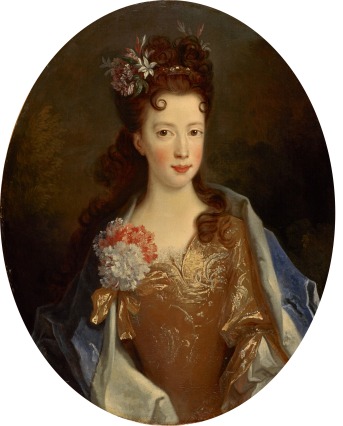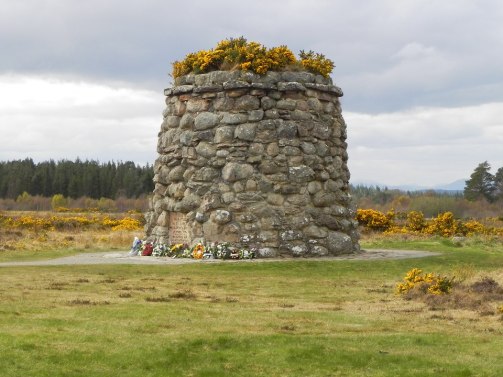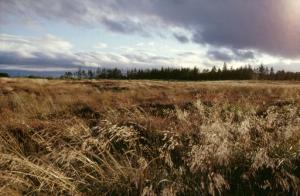Perhaps one of the most common misconceptions we have here at Culloden Battlefield is the belief that the battle was fought between England and Scotland. It was not. Perhaps one of the most important aspects of this battle is that it was a civil war. Families were split across both sides of the battle and the reasons that brought the men to the field were much more complex than just a matter of which side of the border you lived.
The first Jacobites came into force when the Catholic King James II & VII was deposed and the throne was passed to his Protestant brother-in-law William of Orange. The term Jacobite, which comes from the lain ‘Jacobus’ for James is defined as a supporter of the deposed James II and his descendants in their claim to the British throne. So, at a very basic level those who became Jacobites wanted a Stuart king on the British throne.
But, why a Stuart king over William of Orange, Queen Anne or the Hanoverian Kings George I and George II? Initially it could be said that there was very much a religious divide with Catholics joining the Jacobites. When King James II & VII was in power he believed in the divine right of king and the government saw some of their power removed. Not only that but Roman Catholicism was the religion of England’s historical enemies, France and Spain and when the English parliament invited William of Orange over to contest the throne he accepted and began the change from Catholics Stuarts to Protestant descendants occupying the throne.
The Act of Settlement passed in 1701 in some ways sealed the fate of the Stuarts declaring that anyone who became a Roman Catholic, or who married one, was disqualified to inherit the throne. This Act would eventually be the reason for the move to the house of Hanover and King George I taking the throne.
If everything stayed as simple as this it might be easy to explain who was on the side of the Jacobites. Alas, nothing in history is that simple. After religion came the power of politics. In 1707 the kingdoms of Scotland and England were united and the Kingdom of Great Britain was formed. Many people across Scotland and England were unhappy with the Union and saw it as unfair and saw certain areas of the country profiting more than others. Some felt the Scottish Parliament had been bribed and Scotland was bought out by England with fears Scotland would simply be swallowed up by England as Wales had some 400 years previous. The English felt they would be paying off Scottish debts from the unsuccessful Darien scheme and Scottish merchants would be allowed to trade with the English colonies. And, of course, distrust was felt both ways with neither side confident the other would hold up their ends of the Union. Rioting over the Union occurred both sides of the border.
With the changes in economics and politics that followed the Union the Jacobite cause was able to continue with the riots fuelling the need for change. The Union was seen to aid the cities and lowlands of Scotland and those in the Highlands were more willing to fight the Union leading to many Highland men joining the Jacobite cause. The excitement of joining a new cause and fighting against the people in power was also an important selling technique that encouraged young men across the country to join the Jacobite cause. Finally, with unrest apparent across Britain this was the perfect opportunity for other countries to try and take on the country and the Jacobite rebellions saw support from the French, Irish and Spanish bringing recruits from across the sea to support the Jacobite cause in the hopes of dismantling the power of the British.
Whilst many people joined because they wanted to many men became Jacobites through necessity. The clan system was still in force throughout Scotland and if the clan chief decided to fight for the Jacobties then the rest of the clan would follow or face the consequences. If asked to fight the would agree or they would be dragged out to fight and have their house burnt down if they refused to join the clan chief. Some clans were even more crafty placing men on both sides of the conflict. One son could be fighting with the government army and the other would join the Jacobites. With both sides covered the clan would hopefully remain safe regardless of which side won and the losing side could be struck off as a rebel group of men and not representative of the whole clan keeping them safe from repercussions.
With people in economic crisis the Jacobites were seen as a chance to escape poverty and join a group that would look after its followers. Thus, men across Scotland and England joined in the hope of finding a new more prosperous life. Religion still played its part and by 1745 many Episcopalians, who believed in the divine right of kings, joined the Jacobites to fight for the Stuarts who were seen as the rightful kings and hoped they would end the discriminatory laws against Catholics.
So, by 1745 and the last Jacobite rebellion there were Jacobites who fought for a Stuart king, for their religion, to improve their economic status, because they were forced into battle or for the excitement of representing a cause. There was no such thing as an average Jacobite and they came from all walks of life and across Great Britain. At the battle of Culloden there were clans on both sides of the conflict and soldiers from Ireland, France, England and Scotland all fighting for their own personal reasons.
The battle was very much a civil war and was far more complex than a simple Scotland vs. England as some believe. Hopefully we’ve given you a little insight into the world of the Jacobites but this by no means covers all the stories that led people to leave their homes and fight for what they believed in.
As always please comment, like, share, tweet, and keep following us down this road of discovery.
All the best, K & D






